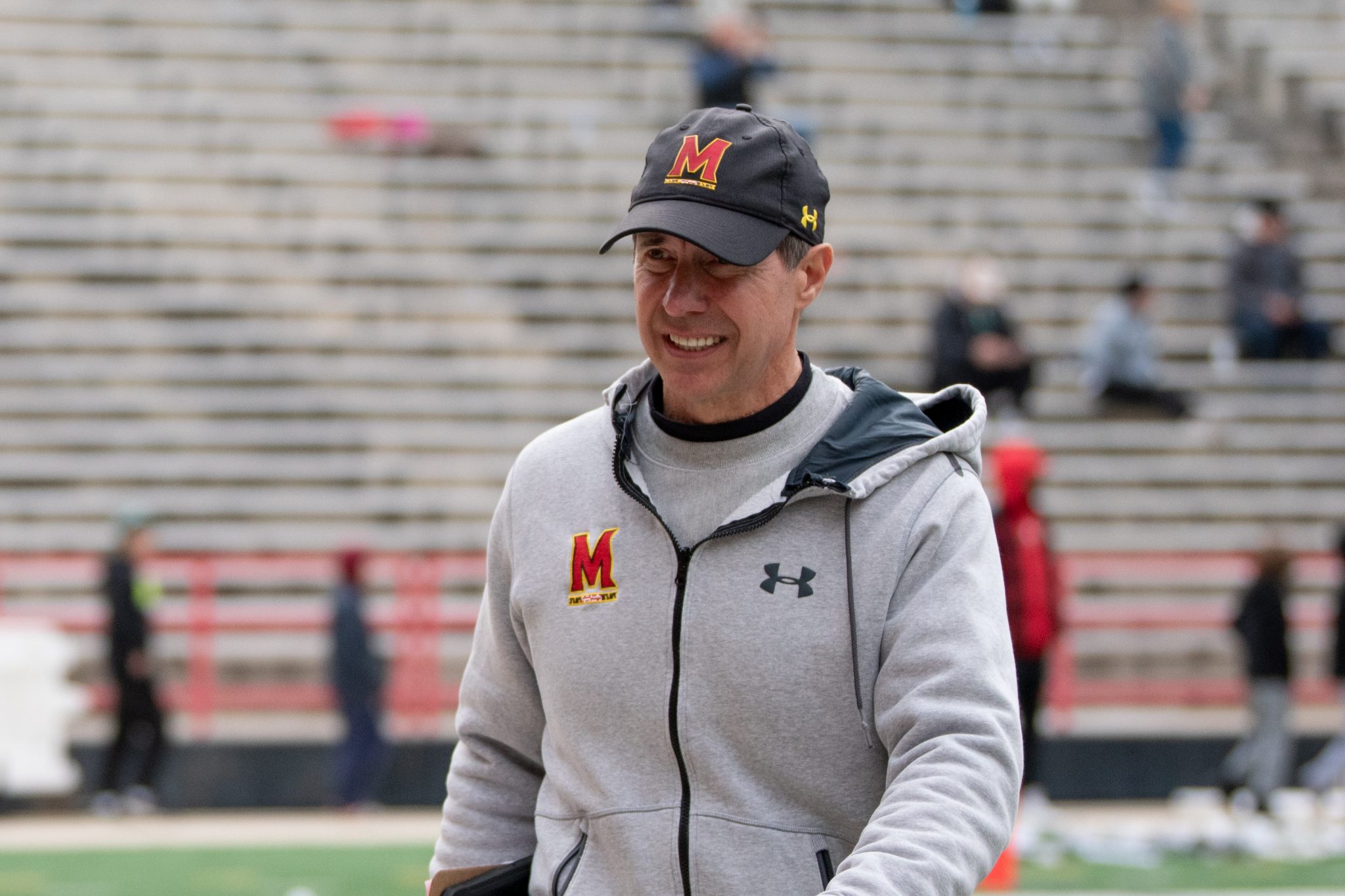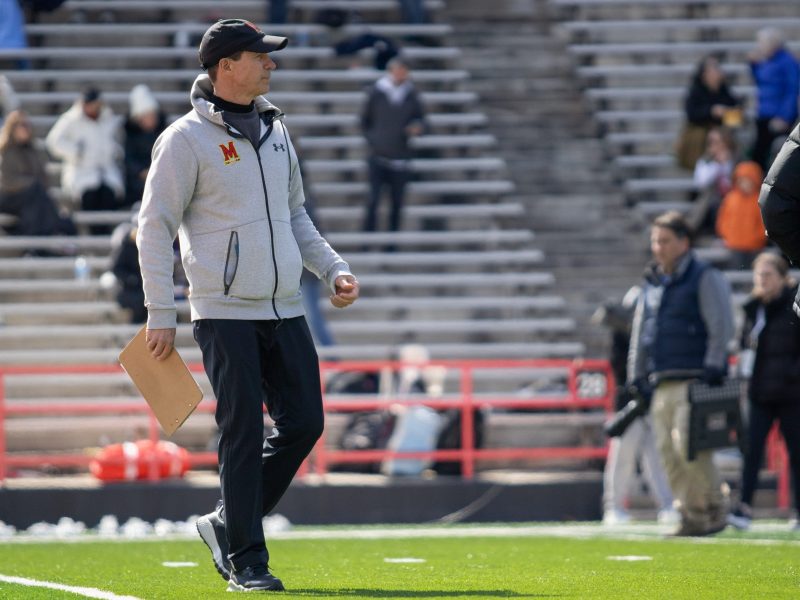Mac Costin drove toward the inside of No. 6 Maryland men’s lacrosse’s defense, looking to extend No. 8 Penn State’s lead to three. The midfielder dove at the cage.
Costin squeaked a shot into the net, landing inside the goal crease on his lunge. Colin Sharkey immediately turned to an official to dispute the potential score, waving his right arm to signal the goal wasn’t clean.
Officials momentarily discussed. They ruled Costin’s shot a successful score.
A review would have overturned the goal, but the Big Ten decided this offseason to not use video review in the regular season. The Terps were penalized because of that decision.
Video review is allowed in nonconference games. Maryland saw that in its sudden-death win over No. 4 Syracuse on Feb. 17.
The Orange’s Michael Leo bounced a shot past Logan McNaney in overtime for what Syracuse believed was the game-winning goal, but officials waved off the score as they deemed Leo landed in the goal mouth — the arc inside the goal crease that players are prohibited from diving into.
[Maryland men’s lacrosse’s late-game heroics helped it avoid a catastrophic month]
Replay review confirmed the ruling.
“There’s so many games now where those calls are so tough for officials,” Tillman said. “For everybody’s benefit, I think sometimes that replay can be useful.”
In last season’s NCAA tournament semifinal matchup between Penn State and Duke, the Blue Devils won in overtime as Garrett Leadmon lunged a shot into the back of the net in sudden death. Duke secured a trip to the NCAA championship game.
Leadmon’s right foot was on the goal crease arc as he dove. According to NCAA rules, the shot shouldn’t have counted and the game should’ve continued.
But the NCAA Men’s Lacrosse Rules Committee, which Tillman is the chair of, didn’t create the ability for a crease call to be reviewed and overturned.
“Given the stage that it was on, and how important that was … knowing everything at stake you would like to get that right,” Tillman said.
[No. 12 Maryland men’s lacrosse overcomes early deficit to beat No. 4 Penn State, 13-11]
The result prompted the rules committee to change the video review criteria for the 2024 season. Replay could now determine if a player stepped into the goal crease before the ball crossed the goal line.
The committee wanted to allow the conferences their choice to include the NCAA’s guidelines for video review, but they weren’t sure if they could force conferences into one unified replay protocol, Tillman said.
Some Big Ten coaches were in favor of video review, Tillman said. But the lack of a unilateral replay stance and cost implications made the conference forgo replay review in the regular season.
That decision has made it impossible for Big Ten coaches to challenge calls in conference games, despite the challenge system’s addition to the NCAA for 2024.
“I think the intent [of the replay review rule change] was if the officials weren’t sure and they wanted clarity, they could stop and look at it,” Tillman said. “But also if they didn’t have a good view of it you could allow a coach to say ‘hey, listen, I have a challenge. I want to utilize it,’ so you’re covering both bases.”
During the offseason, the rules committee and the NCAA Playing Rules Oversight Panel determined it is important to have a challenge system and an expanded video review process across multi-conference contests and the NCAA tournament.
Maryland’s matchup with Penn State fell under the Big Ten’s ruling for replay review and challenges since it was a conference game. The officials couldn’t review Costin’s goal on Sunday. Tillman couldn’t challenge the play.
The conference’s decision impacted the Terps’ last game. It can affect each of their final three regular season games this season.
“I’m hoping as we go along it’s something we can revisit after the year,” Tillman said. “And see if anything can be done.”



